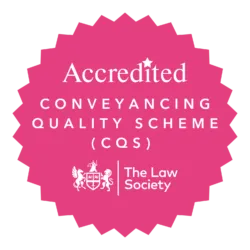
Redundancy: A Summary
An employee may only be dismissed by reason of redundancy if a genuine redundancy situation exists. A genuine redundancy situation exists in three circumstances as set out in section 139 of the Employment Rights Act 1996:
- The employer’s business as a whole has closed down (e.g. where the business has gone into liquidation)
- The employee’s actual work place has closed down (e.g. the closure of a factory where the employee works)
- The employer has decided to reduce the size of the workforce as there is no longer the need for the employer to employ people to do work of a particular kind (e.g. an employer starts using machines for packing goods so a factory becomes mostly automated, thereby reducing the need for employees to carry out the packing work)
If an employee can show that they were dismissed for any of these redundancy reasons then they may be eligible for a statutory redundancy payment or, possibly, a contractual redundancy payment (see below).
Length of Service
Employees are eligible for a statutory redundancy payment if they have 2 or more years of service with the employer since the age of 18.
Amount of Redundancy Payment
An employee is entitled to:
- For every complete year of service aged 41 and over – 1 and a half weeks’ gross pay
- For every complete year of service aged 22 to 40 – 1 weeks’ gross pay
- For every complete year of service up to age 21 – half a weeks’ gross pay
There is a limit on the amount of a basic weeks pay which can be claimed. The maximum service that can count is 20 years.
An employee can lose their right to a redundancy payment in the following circumstances:
- Where the employee is offered suitable alternative employment and unreasonably refuses it
- Where the employee is dismissed for gross misconduct during the redundancy notice period
- Where the employee resigns before the end of the notice period
A contractual redundancy payment depends on what the employee’s contract says. There is no automatic right to an enhanced redundancy payment.
What to do if your employer does not pay
An employee has 3 months (less one day) to bring a claim in the Employment Tribunal for an employer’s failure to pay a contractual redundancy payment and 6 months (less one day) to bring a claim in the Employment Tribunal for an employer’s failure to pay a statutory redundancy payment.
Time runs from the date the employee’s employment is terminated.
If a contractual redundancy payment is more than £25,000 then the claim cannot be brought in the Employment Tribunal and must be brought in courts where the time limit is 6 years.
Tribunals can either increase or reduce an award by 25% if they think that the employer or employee has unreasonably failed to follow the ACAS code of practice. The ACAS code of practice can be found on the ACAS website.
Protective Awards
If an employer is considering making 20 or more employees redundant they must first consult, in good time, with any trade union which is recognised for collective bargaining or, if no trade union is recognised, with elected representatives of the workforce.
The consultation period must commence at least 45 days before the redundancies where an employer proposes to make 100 or more employees redundant or at least 30 days for between 20 and 99 employees.
The employer must provide appropriate information to the representatives and the employer has to consult with a view to reaching an agreement regarding the proposed redundancies. If the employer fails to consult and provide the appropriate information then the representatives (or if there are no representatives, the employees affected) can apply for a protective award. The award can be anything up to 90 days’ pay, according to the circumstances, for each employee affected.
The time limit for a protective award is normally 3 months (less a day) from the date the dismissal takes effect.
This page is for information only and is not intended to be a substitute for legal advice.
For more information on redundancy and other employment rights issues, please call our Employment Rights team on 0113 245 0733 or email Daniel Kindell or David Sorensen.










